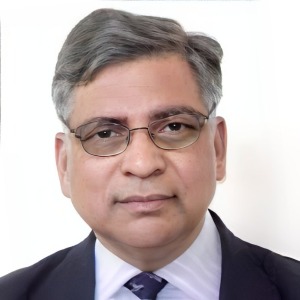Title : Role of artificial intelligence and remote sensing to study chemical processes and breakthroughs in catalytic oxidation to develop technologies for ‘Chemical Remediation of the Aquatic pollution’(cart).
Abstract:
Artificial Intelligence and Remote Sensing would be employed to explore the deep seas to understand of the impacts of Ocean Systems Interactions, Risks, Instabilities, and Synergies, ocean-cryosphere interactions and sea-based pollutants on the ocean ecosystem.
The Oxidation process would be employed to treat Groundwater contaminants by making use of the chemical oxidants viz. hydrogen peroxide, persulfate, permanganate & ozone. These oxidants have been able to cause the rapid and complete chemical destruction of many toxic organic chemicals; other organics are amenable to partial degradation as an aid to subsequent bioremediation. Water gets polluted due to toxins & toxic gases. There are generally four toxic entities: chemical, biological, physical, and radiation. Chemical toxicants include inorganic substances such as lead, mercury, hydrofluoric acid, and chlorine gas, and organic compounds such as methyl alcohol. Hence, the focus is to develop innovative methods to entrap toxins, by developing High-Affinity Toxin Receptors, converting GHG (Methane) to ethanol by catalytic processes developing hybrid fuels like bioethanol and biodiesel, and going for electricity from biomass.
It’s presumed that catalytic oxides of first-row transition metal oxides e.g. Cobalt oxide should optimize the process of subsurface remediation and above-ground water treatment systems depending on a variety of site-specific conditions e.g. reaction rate kinetics. Chemical oxidation be applied in subsurface systems and in above-ground water treatment systems involving chemical oxidation regeneration of granular activated carbon). To correlate the Physicochemical properties of these catalytic oxides of first-row transition metal oxides, to discuss strategies to control Global Warming and remediation of Water pollution resulting due to toxins, toxic gases, (Green House Gases), to save marine life (underwater).
Next, to evaluate the correlation of chemical oxidants with chemical species associated with soil, aquifer materials, and contaminants during water treatment processes to develop Technologies for ‘Chemical Remediation of the Aquatic pollution.
Keywords: HART, GAC, reaction rate kinetics, catalytic oxides, reaction rate kinetics, catalytic oxides, GW, Aquatic pollution, Chemical Remediation Technologies, ‘Chemical Remediation of the Aquatic Pollution’(CART)



